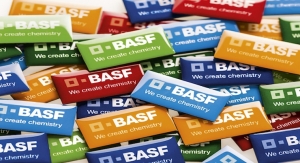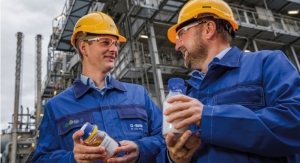01.09.19
Martin Brudermüller, chairman of the board of executive directors, BASF SE, and Lin Shaochun, vice governor of Guangdong Province, signed a Framework Agreement in Ludwigshafen setting out further details of BASF’s plan to establish a new smart Verbund site in Guangdong, China.
Following the signing of the Memorandum of Understanding in July 2018, BASF selected the city of Zhanjiang as the location for its second Verbund site in China.
“By 2030, China’s share of the global chemical production will increase to nearly 50 percent,” Brudermüller said. “Guangdong is a growing market for innovations from chemistry, and our new site will support customers in multiple industries. We aim to help our customers to grow sustainably with our portfolio of products, solutions and services, and at the same time establish new concepts to improve the sustainability of our own operations.”
According to the Framework Agreement, fundamental circular economy concepts will be incorporated into the new Verbund site in Zhanjiang, to support customers in the region with sustainably produced solutions. At a Verbund site, resources are conserved through the use of waste and byproducts as raw materials. A smart manufacturing concept is being further developed for the new site on the basis of cutting-edge technologies that maximize resource and energy efficiency and reduce environmental impact. Around 9 km2 of land will be allocated for the project.
The total investment is estimated to reach up to $10 billion and will be implemented in phases. The project will include a wholly-owned steam cracker with a planned capacity of 1 million metric tons of ethylene per year and several plants for consumer-oriented products and solutions.
Globally, BASF currently operates six Verbund sites: Two in Europe (Ludwigshafen, Germany; Antwerp, Belgium), two in North America (Freeport, Texas; Geismar, Louisiana) and two in Asia. The Verbund site in Nanjing, China, established in 2000, is a 50/50 joint venture with Sinopec, while the Verbund site in Kuantan, Malaysia, established in 1997, is a 60/40 joint venture with Petronas.
Following the signing of the Memorandum of Understanding in July 2018, BASF selected the city of Zhanjiang as the location for its second Verbund site in China.
“By 2030, China’s share of the global chemical production will increase to nearly 50 percent,” Brudermüller said. “Guangdong is a growing market for innovations from chemistry, and our new site will support customers in multiple industries. We aim to help our customers to grow sustainably with our portfolio of products, solutions and services, and at the same time establish new concepts to improve the sustainability of our own operations.”
According to the Framework Agreement, fundamental circular economy concepts will be incorporated into the new Verbund site in Zhanjiang, to support customers in the region with sustainably produced solutions. At a Verbund site, resources are conserved through the use of waste and byproducts as raw materials. A smart manufacturing concept is being further developed for the new site on the basis of cutting-edge technologies that maximize resource and energy efficiency and reduce environmental impact. Around 9 km2 of land will be allocated for the project.
The total investment is estimated to reach up to $10 billion and will be implemented in phases. The project will include a wholly-owned steam cracker with a planned capacity of 1 million metric tons of ethylene per year and several plants for consumer-oriented products and solutions.
Globally, BASF currently operates six Verbund sites: Two in Europe (Ludwigshafen, Germany; Antwerp, Belgium), two in North America (Freeport, Texas; Geismar, Louisiana) and two in Asia. The Verbund site in Nanjing, China, established in 2000, is a 50/50 joint venture with Sinopec, while the Verbund site in Kuantan, Malaysia, established in 1997, is a 60/40 joint venture with Petronas.




























